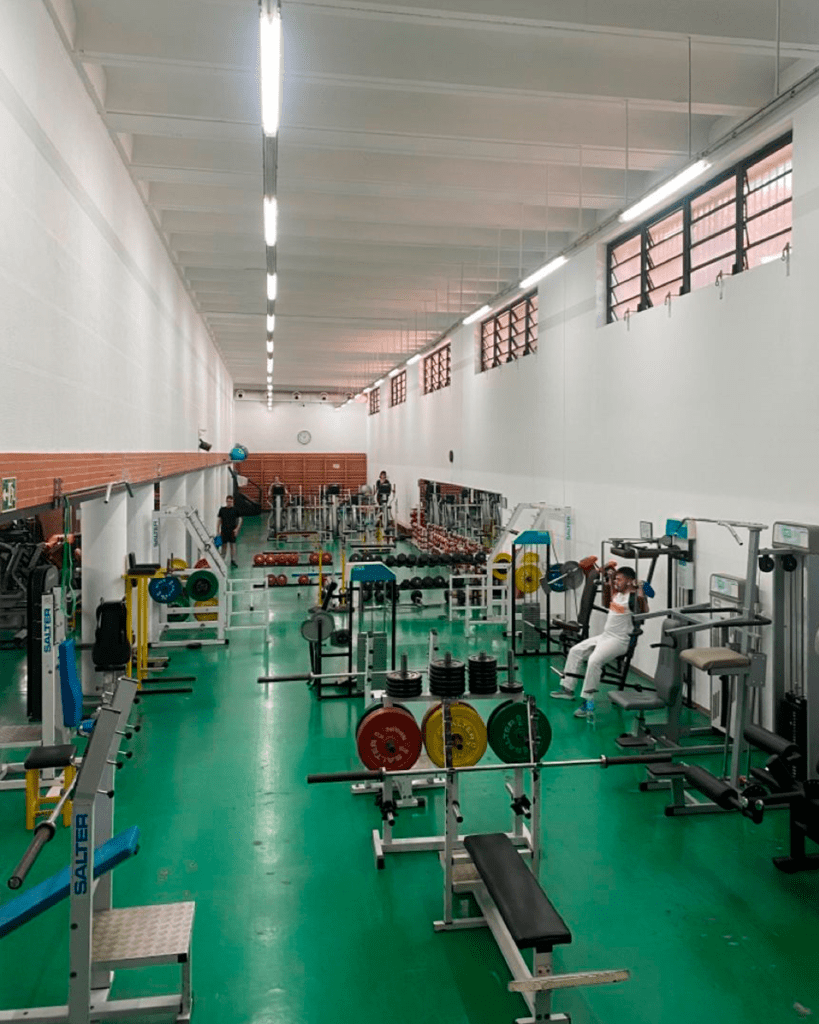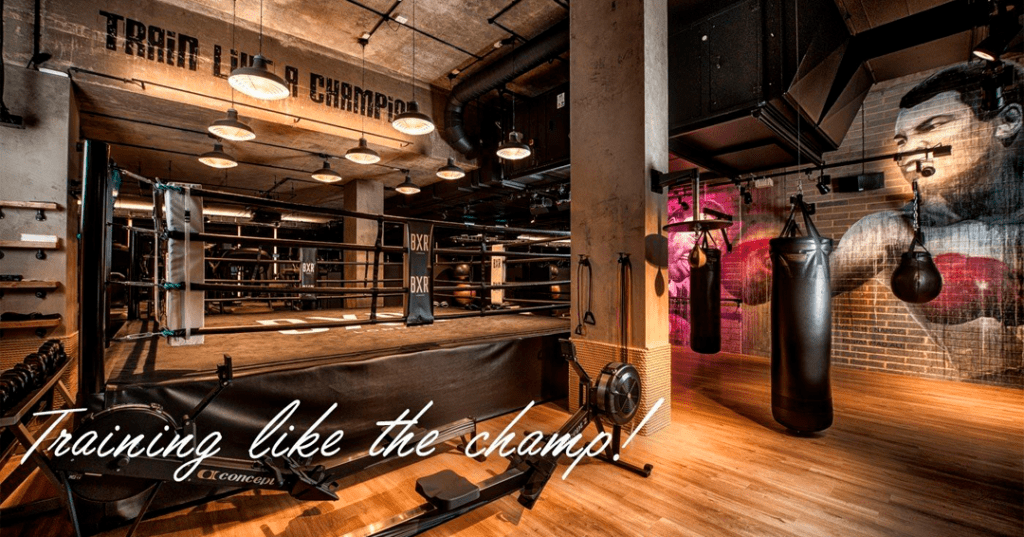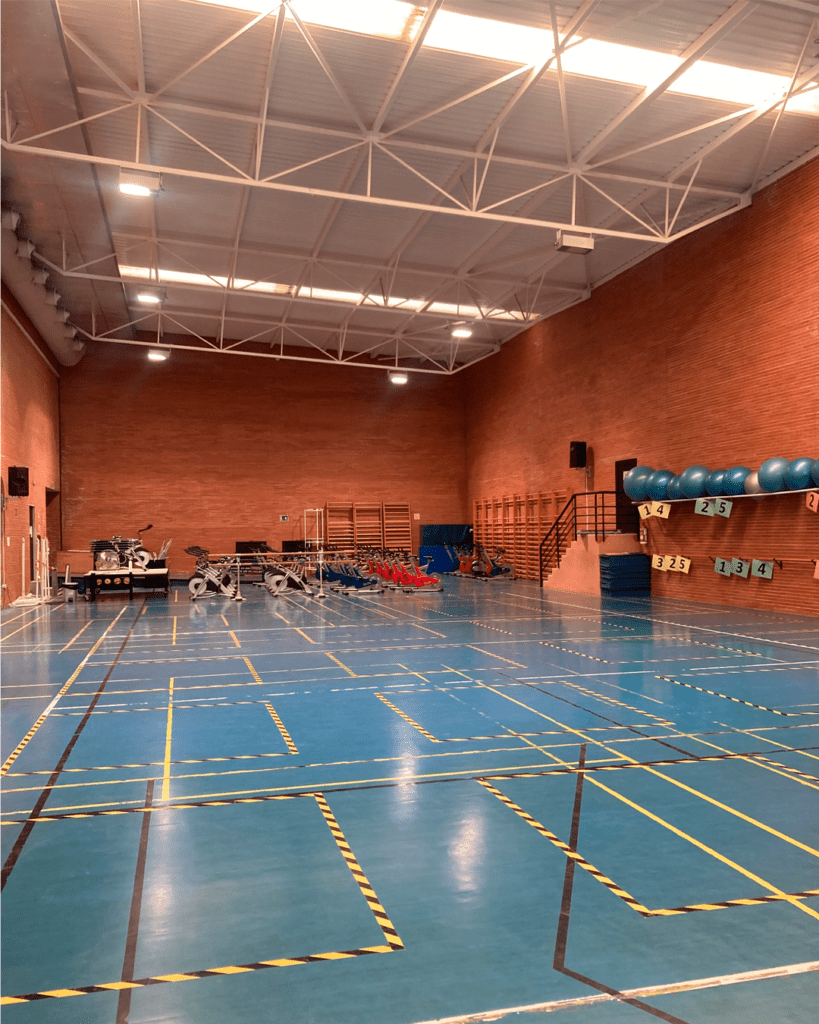DESIGNING AND BUILDING SPORTS SPACES WITH A MENTAL FOCUS
Table of Contents:
- Introduction
- The Importance of Mental Focus in Sports Performance
- Designing Sports Spaces Centered on Mental Focus 3.1 Interior Design for Concentration 3.2 Incorporating Natural Elements 3.3 Spaces for Relaxation and Meditation
- Sustainable Architecture for Athletes’ Mental Health
- Technology and Tools for Mental Focus in Sports Spaces
- Inclusive Design in Sports Spaces to Promote Mental Health
- Case Studies: Examples of Sports Spaces Prioritizing Mental Focus
- Conclusions
Introduction:
In the world of sports, mental focus plays a crucial role in athletes’ performance and success. The ability to concentrate, stay calm under pressure, and maintain a clear mindset can make all the difference between victory and defeat. Recognizing the significance of mental focus, designers and architects are now turning their attention to creating sports spaces that specifically cater to athletes’ mental well-being.
This blog aims to delve into the realm of designing and constructing sports spaces with a mental focus. We will explore various elements that contribute to an environment conducive to mental clarity, including interior design, sustainable architecture, technological advancements, and inclusive design principles. By understanding the importance of these factors and their impact on athletes’ mental states, we can revolutionize the way sports spaces are conceived and built.
Throughout this blog, we will discuss the essential components of sports spaces that foster mental focus. From the incorporation of natural elements to the use of innovative technologies, we will explore how each aspect contributes to creating an environment that enhances athletes’ mental well-being. Additionally, we will examine real-world case studies that showcase successful implementations of these principles.
By the end of this blog, you will gain a comprehensive understanding of the strategies and considerations involved in designing and constructing sports spaces that prioritize mental focus. Whether you are an athlete, a sports facility manager, or a designer interested in this field, this blog will provide valuable insights and inspiration for creating spaces that promote optimal mental performance.
Let’s embark on this journey of exploring the fascinating world of sports spaces designed to sharpen the mind and unlock the full potential of athletes.
The Importance of Mental Focus in Sports Performance

Sports performance is not solely determined by physical abilities and technical skills. Mental focus plays a critical role in an athlete’s ability to perform at their best. It encompasses various aspects such as concentration, attention control, emotional regulation, visualization, and goal setting. Here, we highlight the significance of mental focus in sports performance and its impact on athletes’ overall success.
Enhancing Performance: Mental focus allows athletes to channel their energy and attention toward the task at hand, optimizing their performance. By maintaining a clear and focused mind, athletes can make split-second decisions, react swiftly, and execute precise movements with accuracy.
Improving Consistency: Consistency is vital in sports. Athletes who can consistently perform at a high level often have strong mental focus. It helps them maintain a consistent level of performance across various conditions and situations, minimizing fluctuations in their game.
Managing Pressure: Sports often involve high-pressure situations, such as competitions, championships, or critical moments within a game. Mental focus equips athletes with the ability to stay calm, composed, and perform effectively under pressure. It enables them to block out distractions, overcome self-doubt, and deliver their best performance when it matters the most.
Enhancing Decision-Making: Quick and accurate decision-making is a crucial aspect of sports performance. Mental focus allows athletes to analyze the situation, assess options, and make informed decisions efficiently. It helps them anticipate and react to the actions of opponents, adapt to changing game dynamics, and seize advantageous opportunities.
Boosting Confidence: Mental focus contributes to building and maintaining confidence in athletes. When athletes are mentally focused, they trust their abilities and have a positive mindset. This self-belief translates into improved performance, as they approach challenges with determination and resilience.
Facilitating Skill Development: Mental focus is essential not only during competitions but also during practice and skill development. By maintaining a concentrated and engaged mindset during training sessions, athletes can enhance their learning, absorb new techniques, and refine their skills more effectively.
Promoting Recovery and Well-being: Mental focus is not limited to performance during competitions. It also plays a crucial role in an athlete’s recovery and overall well-being. By practicing techniques such as mindfulness, relaxation, and visualization, athletes can manage stress, reduce anxiety, and promote mental and emotional balance, contributing to their overall health and longevity in the sport.
In conclusion, mental focus is a vital component of sports performance. It influences an athlete’s ability to concentrate, make sound decisions, manage pressure, and perform consistently at a high level. By recognizing the significance of mental focus and integrating strategies to enhance it, athletes can unlock their full potential and achieve peak performance in their respective sports. In the following sections, we will explore how the design and construction of sports spaces can contribute to fostering and optimizing mental focus in athletes.
Designing Sports Spaces Centered on Mental Focus
When designing sports spaces that prioritize mental focus, various elements and considerations come into play. The environment in which athletes train and compete can greatly influence their mental state and performance. Here, we will explore key design aspects that contribute to creating sports spaces centered on mental focus.
3.1 Interior Design for Concentration
The interior design of sports spaces can significantly impact athletes’ ability to concentrate and maintain focus. Consider the following design elements:
a. Color Psychology: Colors have the power to evoke different emotions and mental states. Opt for calming and neutral colors like blues and greens to create a serene and focused atmosphere. Avoid overly bright or distracting colors that can hinder concentration.
b. Clutter-Free Environment: Minimize visual clutter by ensuring a clean and organized space. A clutter-free environment reduces distractions and allows athletes to direct their attention solely to their training or competition.
c. Adequate Lighting: Proper lighting is essential for concentration. Incorporate ample natural light whenever possible, as it promotes alertness and enhances mood. Additionally, consider adjustable artificial lighting options to cater to different activities and create an optimal environment for mental focus.
3.2 Incorporating Natural Elements
Connecting with nature has been shown to have positive effects on mental well-being. Integrate natural elements into sports spaces:
a. Outdoor Views: Whenever feasible, provide athletes with views of outdoor scenery. Natural landscapes can induce a sense of calm and relaxation, reducing stress and enhancing mental focus.
b. Biophilic Design: Incorporate elements such as indoor plants, natural materials, and textures to bring nature indoors. Biophilic design has been found to improve cognitive function, attention span, and overall well-being.
c. Accessible Outdoor Spaces: Design sports facilities with accessible outdoor areas that athletes can utilize for training, relaxation, or mental rejuvenation. These spaces can offer a breath of fresh air, exposure to sunlight, and a connection to nature, all of which contribute to mental well-being.
3.3 Spaces for Relaxation and Meditation
Creating dedicated spaces for relaxation and meditation within sports facilities can support athletes in achieving a focused and calm state of mind. Consider the following:
a. Meditation Rooms: Designate specific rooms or areas for meditation and mindfulness practices. Provide comfortable seating, dimmable lighting, and a serene ambiance to facilitate relaxation and mental rejuvenation.
b. Quiet Zones: Designate quiet areas where athletes can retreat to find solitude and recharge their mental batteries. These zones should be free from distractions and noise, promoting a sense of calm and introspection.
c. Breathing and Visualization Areas: Incorporate spaces where athletes can practice deep breathing exercises and visualization techniques. These areas can feature soothing elements like natural sounds, calming visuals, and comfortable seating to support athletes in achieving a focused mental state.
By integrating these design considerations, sports spaces can become conducive environments for mental focus. In the next section, we will explore how sustainable architecture can further enhance athletes’ mental well-being in these spaces.
Sustainable Architecture for Athletes' Mental Health
In addition to promoting environmental responsibility, sustainable architecture can have a significant impact on athletes’ mental well-being. The design and construction of sports spaces using sustainable principles contribute to a healthier and more supportive environment for athletes. Let’s explore key considerations for sustainable architecture that enhance athletes’ mental health.
4.1 Natural Light and Ventilation
Maximizing natural light and ventilation in sports spaces has numerous benefits for athletes’ mental well-being:
a. Daylighting: Incorporate ample windows, skylights, and light wells to optimize natural light. Exposure to natural light has been linked to improved mood, increased productivity, and better sleep patterns, all of which positively impact mental focus.
b. Views and Connection to the Outdoors: Create spaces that offer views of nature and allow for a connection to the outdoor environment. Athletes can benefit from the visual stimulation and sense of openness, which can improve their mental state and overall well-being.
c. Proper Ventilation: Ensure effective ventilation systems that supply fresh air to sports spaces. Good air quality promotes mental clarity, reduces fatigue, and supports athletes’ physical performance.
4.2 Use of Eco-friendly and Non-toxic Materials
Choosing eco-friendly and non-toxic materials for construction and finishes can positively influence athletes’ mental health:
a. Low VOC (Volatile Organic Compounds) Materials: VOCs found in many building materials can negatively impact air quality and health. Opt for low VOC or VOC-free materials to minimize the presence of harmful substances in the air, improving indoor air quality and athletes’ cognitive function.
b. Sustainable Flooring and Finishes: Select flooring materials made from sustainable and non-toxic materials. Examples include bamboo, cork, and reclaimed wood. Avoid materials that contain harmful chemicals, such as formaldehyde.
c. Acoustic Considerations: Proper acoustic design is crucial in sports spaces to minimize noise distractions and enhance concentration. Incorporate sound-absorbing materials and strategic placement of acoustic panels to create an environment conducive to mental focus.
4.3 Integration of Outdoor Spaces
Sustainable architecture can include the integration of outdoor spaces within sports facilities, offering several mental health benefits:
a. Biophilic Design: Extend the principles of biophilic design to outdoor areas, incorporating natural elements, vegetation, and water features. Athletes can utilize these spaces for relaxation, stress reduction, and mental rejuvenation.
b. Green Roofs and Living Walls: Implement green roofs and living walls, where feasible, to increase the presence of vegetation within the sports facility. These features not only enhance the aesthetic appeal but also provide benefits such as improved air quality and a sense of connection with nature.
c. Exercise and Rest Areas: Design outdoor exercise areas and rest zones, where athletes can engage in physical activities, enjoy fresh air, and take breaks amidst nature. These spaces promote mental well-being by providing opportunities for rejuvenation and a change of scenery.
By integrating sustainable architectural practices, sports spaces can foster a healthier and more supportive environment for athletes’ mental health. In the next section, we will explore how technology and innovative tools can further enhance mental focus in sports spaces.
Technology and Tools for Mental Focus in Sports Spaces
Advancements in technology offer exciting opportunities to enhance mental focus in sports spaces. Various tools and applications can support athletes in improving their concentration, visualization, and overall mental well-being. Let’s explore some of the key technologies and tools that can be integrated into sports spaces to optimize mental focus.
5.1 Biofeedback and Neurofeedback
Biofeedback and neurofeedback technologies provide real-time data on an athlete’s physiological responses, allowing them to gain insights into their mental and physical states. Key applications include:
a. Heart Rate Variability (HRV) Training: HRV training helps athletes regulate their heart rate variability, a measure of autonomic nervous system function. By monitoring and optimizing HRV, athletes can achieve a state of relaxation and focus.
b. Brainwave Monitoring and Training: Neurofeedback systems measure brainwave activity and provide visual or auditory feedback to help athletes regulate their mental states. This technology can enhance focus, concentration, and mental resilience.
c. Breathing and Relaxation Guidance: Biofeedback tools can guide athletes in achieving optimal breathing patterns and relaxation techniques, supporting mental calmness and focus.
5.2 Intelligent Lighting and Ambient Control
Intelligent lighting systems and ambient control technologies can contribute to creating an environment that supports mental focus:
a. Circadian Lighting: Circadian lighting systems mimic the natural changes in daylight throughout the day, promoting alertness, focus, and better sleep-wake cycles. These systems adjust the color temperature and intensity of artificial lighting accordingly.
b. Dynamic Lighting: Dynamic lighting systems allow for customizable lighting scenarios to optimize focus and performance during different activities. Athletes can benefit from adjustable lighting levels and color temperatures tailored to their specific needs.
c. Ambient Soundscapes: Utilize sound systems that provide customizable ambient soundscapes, such as nature sounds, white noise, or calming music. These auditory environments can help athletes block out distractions and enhance their mental focus.
5.3 Virtual and Augmented Reality
Virtual reality (VR) and augmented reality (AR) technologies offer exciting possibilities for mental focus training in sports spaces:
a. Visualization and Mental Rehearsal: VR and AR can create immersive environments where athletes can visualize and mentally rehearse their performances. This technology enhances mental imagery, allowing athletes to mentally practice their skills and improve their focus.
b. Distraction Management: VR and AR can be utilized to simulate distracting scenarios, helping athletes develop resilience and concentration skills. By exposing athletes to various distractions in controlled environments, they can learn to maintain their focus despite external factors.
c. Interactive Training Applications: VR and AR can provide interactive training applications that enhance cognitive abilities, reaction times, and decision-making skills. These technologies create engaging and mentally stimulating training experiences.
By incorporating these technologies and tools into sports spaces, athletes can benefit from enhanced mental focus, concentration, and visualization abilities. In the next section, we will explore the importance of inclusive design in promoting mental health in sports spaces.
Inclusive Design in Sports Spaces to Promote Mental Health
Inclusive design goes beyond physical accessibility; it aims to create sports spaces that cater to the diverse mental and emotional needs of athletes. By considering mental diversity and promoting inclusivity, sports spaces can become more supportive and nurturing environments. Let’s explore key aspects of inclusive design that promote mental health in sports spaces.
6.1 Accessibility and Adaptation for People with Disabilities
Sports spaces should be designed to accommodate athletes with disabilities, ensuring equal access and opportunities. Consider the following:
a. Universal Design: Incorporate universal design principles to create spaces that are accessible and usable by athletes of all abilities. This includes accessible entrances, pathways, seating, and equipment.
b. Adaptive Equipment and Assistive Technology: Provide adaptive equipment and assistive technology that enable athletes with disabilities to fully participate in sports activities. This ensures their mental well-being by fostering a sense of inclusion and empowerment.
c. Sensory Considerations: Account for sensory sensitivities in design, such as minimizing noise levels, providing quiet zones, and considering lighting preferences for athletes with sensory processing differences.
6.2 Inclusive Spaces for Mental Diversity
Inclusive design should also consider the diverse mental and emotional needs of athletes. Here are some considerations:
a. Quiet Spaces: Designate quiet areas where athletes can retreat for solitude and relaxation. These spaces can provide solace for athletes who may require quiet time to manage sensory overload or recharge mentally.
b. Mindfulness and Meditation Areas: Create spaces for mindfulness practices and meditation that cater to athletes who benefit from techniques promoting mental focus and emotional well-being.
c. Mental Health Support: Integrate support services within sports facilities, such as counseling or access to mental health professionals. Promote mental health awareness and provide resources that address the unique challenges athletes may face.
d. Social Interaction Spaces: Design communal areas that facilitate positive social interaction and connection among athletes. A sense of community and support can contribute to mental well-being and foster a positive training environment.
By embracing inclusive design principles, sports spaces can become welcoming and supportive environments for athletes of all backgrounds and mental abilities. In the following section, we will explore inspiring case studies that exemplify sports spaces prioritizing mental focus and inclusive design principles.
Case Studies: Examples of Sports Spaces Prioritizing Mental Focus

Let’s explore inspiring case studies of sports spaces that have successfully prioritized mental focus and incorporated elements of inclusive design:
7.1 The Mind Gym – London, United Kingdom
The Mind Gym in London is a dedicated facility that combines physical training with mental performance coaching. The space is designed to enhance mental focus and well-being through its innovative features:
Mindfulness Rooms: The facility includes dedicated mindfulness rooms where athletes can practice meditation and relaxation techniques to improve their mental focus and emotional balance.
Cognitive Training Zones: The Mind Gym incorporates interactive cognitive training zones equipped with cutting-edge technology. These zones provide athletes with tools to improve their concentration, decision-making skills, and mental resilience.
7.2 Nike Headquarters – Beaverton, Oregon, USA
The Nike Headquarters in Beaverton, Oregon, takes a holistic approach to mental focus and well-being for its employees and athletes. The campus design includes elements that support mental health:
Nature Integration: The campus features expansive green spaces, walking trails, and outdoor seating areas, providing athletes with opportunities to connect with nature and find mental rejuvenation.
Wellness Centers: Nike’s headquarters include wellness centers equipped with meditation rooms, relaxation areas, and counseling services. These spaces promote mental well-being and offer support to athletes in managing stress and maintaining mental focus.
7.3 Tokyo Olympic Village – Tokyo, Japan
The Tokyo Olympic Village for the 2020 Olympic Games focused on creating a supportive environment for athletes’ mental health and well-being:
Serene Spaces: The village incorporated serene outdoor spaces with natural elements, including gardens, water features, and peaceful seating areas. These spaces allowed athletes to find moments of tranquility and enhance their mental focus.
Mental Health Services: The village provided dedicated mental health services, including counseling and support systems, to ensure that athletes had access to resources for managing the pressures of competition and promoting mental well-being.
These case studies demonstrate the successful integration of design elements and support systems to prioritize mental focus and create inclusive sports spaces. By drawing inspiration from these examples, designers and architects can create environments that optimize athletes’ mental health and performance.
In conclusion, designing sports spaces centered on mental focus requires a holistic approach that considers interior design, natural elements, sustainability, technology, inclusivity, and mental health support. By integrating these elements, sports spaces can foster an environment that enhances athletes’ concentration, emotional well-being, and overall performance.
Conclusions
Designing and constructing sports spaces that prioritize mental focus is crucial for optimizing athletes’ performance and overall well-being. By considering key elements such as interior design, natural elements, sustainability, technology, inclusivity, and mental health support, sports spaces can create an environment conducive to mental focus.
Interior design choices, such as color psychology, clutter-free environments, and adequate lighting, play a significant role in creating a focused atmosphere. Integrating natural elements, providing outdoor views, and incorporating biophilic design enhance athletes’ connection with nature and promote mental well-being.
Sustainable architecture practices, including maximizing natural light and ventilation, using eco-friendly and non-toxic materials, and integrating outdoor spaces, contribute to a healthier and more supportive environment for athletes’ mental health.
The integration of technology and tools such as biofeedback and neurofeedback, intelligent lighting and ambient control, and virtual and augmented reality can further enhance athletes’ mental focus, concentration, and visualization abilities.
Inclusive design considerations ensure that sports spaces are accessible and supportive for athletes with disabilities, while also addressing the diverse mental and emotional needs of all athletes. By providing quiet spaces, mindfulness and meditation areas, mental health support, and spaces for social interaction, sports spaces become nurturing environments for mental well-being.
Examining inspiring case studies, such as The Mind Gym, Nike Headquarters, and the Tokyo Olympic Village, provides valuable insights into successful implementations of mental focus and inclusive design principles.
In conclusion, designing and constructing sports spaces centered on mental focus requires a multi-faceted approach that considers various elements and prioritizes athletes’ mental well-being. By creating supportive and nurturing environments, sports spaces can optimize athletes’ concentration, performance, and overall mental health.



